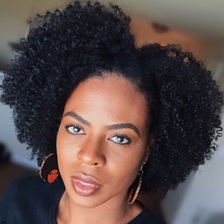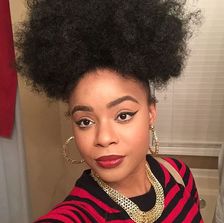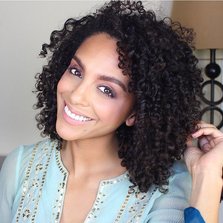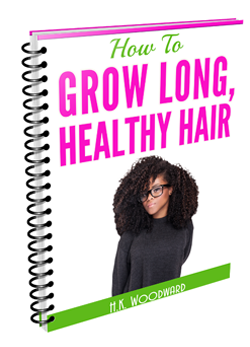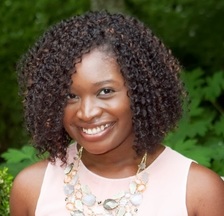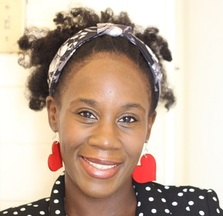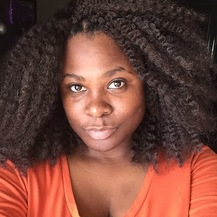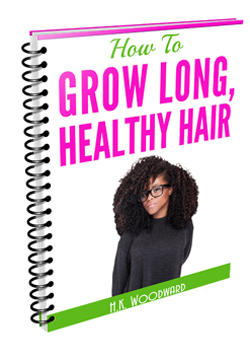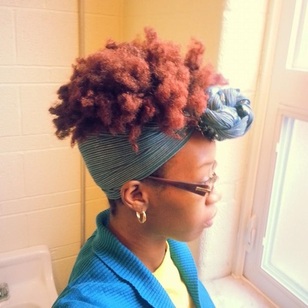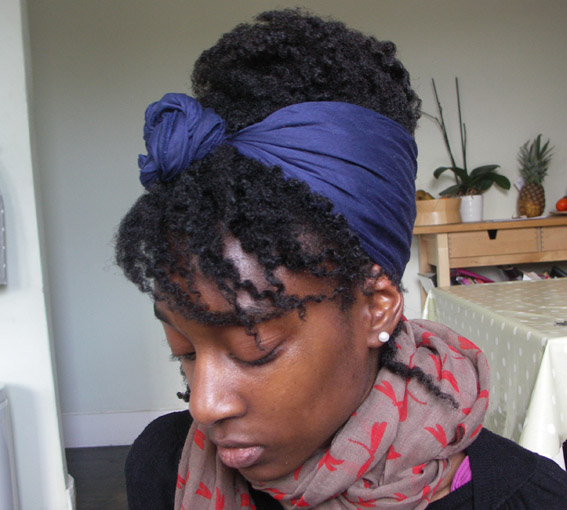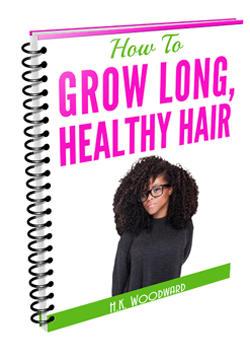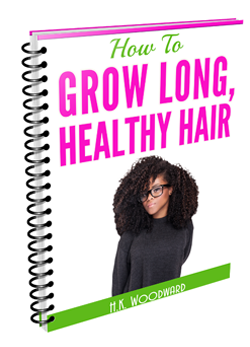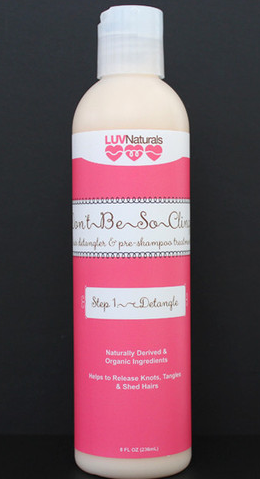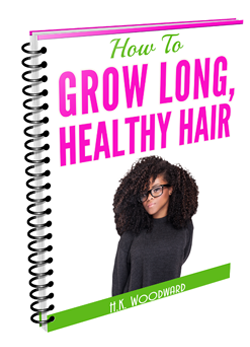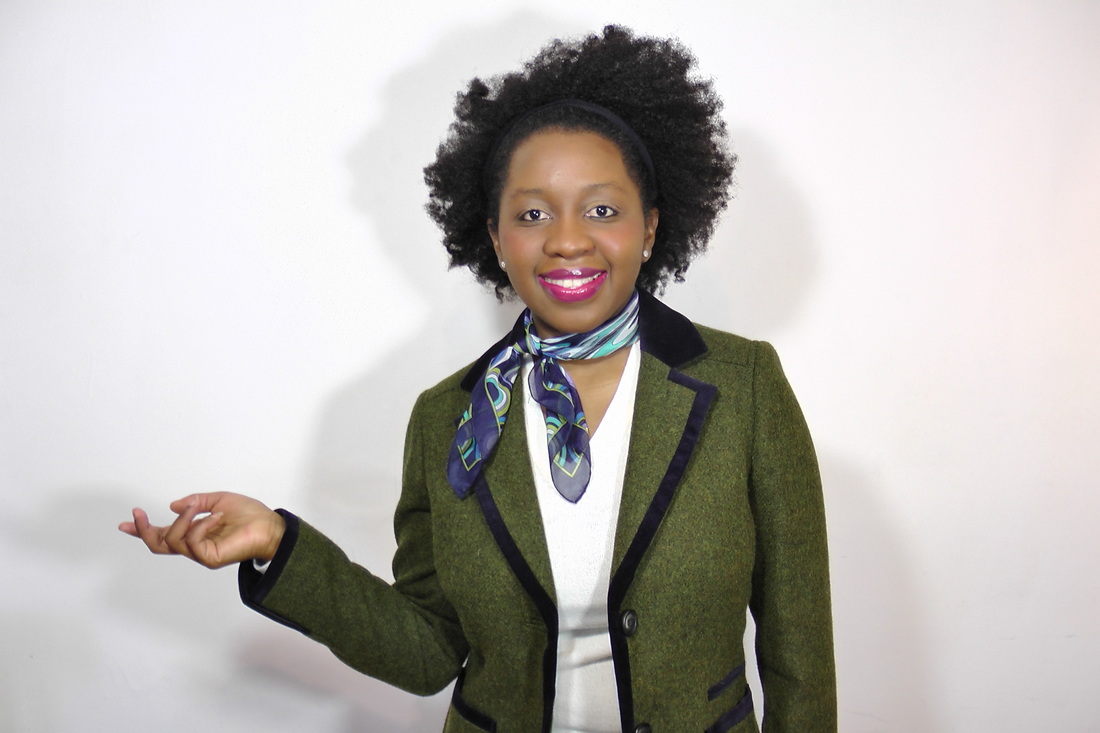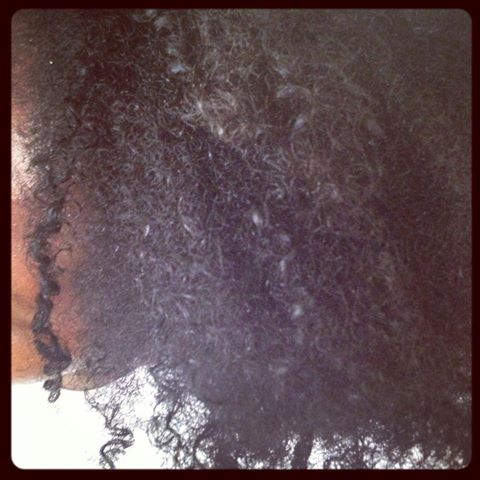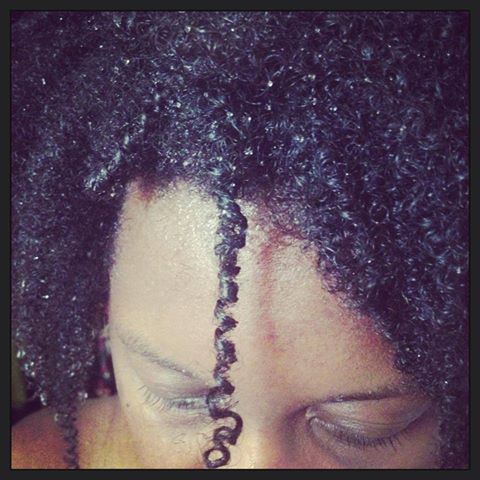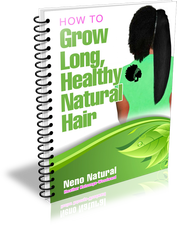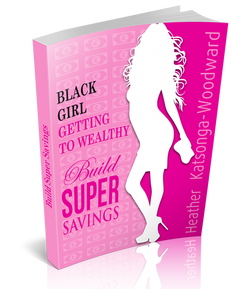|
Lucky are those that big chop on impulse. In a moment of frustration they either pick up a pair of scissor or walk into a barber’s shop and chop their hair off. I’m not one of those girls.
I have long-admired people that go for the bald look and wondered what I would look like without hair. I imagined I’d enjoy it because there would be so little maintenance involved but I also imagined I’d look really weird without hair – my precious hair. Many of us deliberate the big chop like this;should I or shouldn’t I. We want the look but somehow convince ourselves that it won’t look as good on us as it does on others so we don’t. Indeed, after telling fans I’d chop my hair off on 1-Jan-2015, I chickened out. I couldn’t do it – there was too much going on, I told myself; like chopping your hair off takes any time at all. And so, I waited another year and it is in this year I came up with a strategy that helpedme go for the big chop. Hopefully it will help you too,if this is your heart’s desire:
The Night Before Whether you are giving the hair away or keeping it, you want it to be clean. So the day or night before the BC wash and condition your hair thoroughly, moisturize it and twist it. The Day Of The Big Chop With your twists in place go to a barber shop. I don’t recommend cutting your own hair if it’s something you’ve never done before. If you’re doing it for a good cause most barbers will do it for free, they did it for free for me. Ask the barber to chop each twist off neatly and hand it to you before he shaves your head completely, then smile and enjoy the shave. I went for a “1” hair cut – basically, very bald, however you can leave more if you prefer. How Will You Feel Once It’s Done? A mixture of strange and great:strange because you won’t even recognize yourself but also great because, for some reason, you feel like you’ve been released from some kind of a prison. Many describe the feeling as liberated. Either liberated from society’s ideal of beauty or liberated from hair management, a task that enslaves many girls. Anyhow, if you have any BC stories, I’d love to hear them. Make a comment.
1 Comment
Many of us were brought up to believe greasing one’s scalp with “hair food”, such as Blue Magic, Sulfur 8 or any other petrolatum-based grease was essential for maintaining healthy hair. However, many in the natural hair community now argue that greasing your scalp is not essential. So is it? It depends…
Day-to-Day Management Generally, a clean and healthy scalp does not need to be greased to stay soft, pliable and well suited for hair growth. Sebum, the oil naturally produced by the scalp lubricates the scalp on an on-going basis. Importantly, unlike skin, the scalp is not constantly chaffing against clothing or rubbing against furniture so it doesn’t need to be moisturized as intensely or as regularly as skin does. Dry Scalps The above said, just as some people have drier skin than others, some scalps are more dry than others. The dryness of one’s scalp can be impacted by diet and weather. Whatever the case, if your scalp doesn’t seem to lubricate itself and perhaps gets all dry, ashy or dandruff-ridden then it certainly doesn’t hurt to oil it. If your scalp is dry, don’t use a thick or heavy grease; choose a light, nutrient-rich oil to rub into your scalp.
When In Plaits If your hair has just been plaited/braided then it might be useful to oil your scalp to prevent bumps and rashes from forming where the root has been pulled. I personally have a very sensitive scalp; even with minimal pulling my scalp gets sore and bumpy so I oil the scalp religiously for about a week after its been plaited using Neno Natural’s Hair Growth Stimulator when I have just had braids installed. After a week the new growth compensates for the pulling my scalp endured. Hair Growth Last but not least, because the scalp is so thin, you can promote the delivery of oxygen and nutrients to the scalp to help hair grow by massaging it with an oil + essential oil blend. I have quite a few recipes that you can blend yourself. https://www.youtube.com/playlist?list=PLu2772_DbH-LWFfnvzHn-uN6bw4LgX4_b What do you think about greasing the scalp? Is it essential for you? 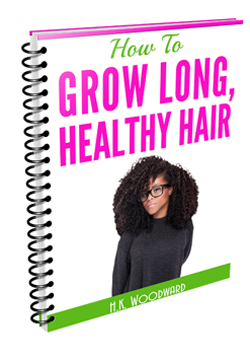
Get your FREE ebook on How To Grow Long, Healthy Natural Kinky or Curly Hair. You might also like: Working with Essential Oils - Understanding Dilution 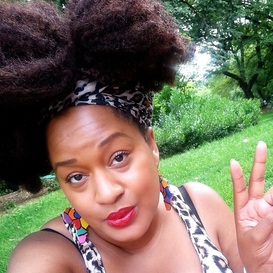 Check out Queen Carmen's Hair Journey & Regimen Check out Queen Carmen's Hair Journey & Regimen
I have been asked this question a few times so I thought it’s high time I gave a proper explanation. What makes one product really cheap and another one more expensive?
Product Price and Product Quality Yes, there is definitely a correlation between the quality of a product and the price but it isn’t a perfect relationship – something that costs £20 isn’t necessarily two times better than a £10 product. That said, some products are cheap for a reason: they use cheap quality ingredients that neither nourish your hair nor your body. Case in point, I was in a Poundland (think, The Dollar Store) – basically as budget as it gets and I saw a 250ml product of “Body Butter” – I couldn’t believe it. There is no way you can produce a body butter that cheaply no matter what your volumes are. So I picked up the bottle to read the ingredients and true to form there was only one vegetable butter on the list and it was very far down the list of ingredients suggesting there wasn’t much of it in there. Ultimately the product was called a butter because they had created a buttery texture but most of it was water and factory made ingredients. Now, there is nothing inherently wrong with most factory ingredients and anything that comes in a can or bottle even Mayo and beans has to contain some form preservation; however, having too much of them reduces the benefits to hair (and skin) compared to a product that use a healthy balance of both farmed and manufactured inputs. A balance needs to be achieved between hair benefits and prolonged shelf life. Sometimes A Cheap Price Hides Another Story Another case in point: I bought a bottle of “Pure Jojoba” because the price was uniquely low; it was too good to be true, I just had to have it. When I got home I thought the product smelt a little “off”. A look at the ingredients list confirmed it wasn’t jojoba but a jojoba and grapeseed oil blend – the product label was lying on the front, calling itself “Pure Jojoba” when it wasn’t! Grapeseed oil is a good oil but it is cheaper than jojoba and has different benefits. I wanted jojoba for the unique benefits that it offers so I was annoyed and disappointed. The price was too good to be true for a reason. Product Price & Unique Ingredients When it comes to product making the more unique the ingredients you use the more expensive the product will be. Shampoo is a good example here. 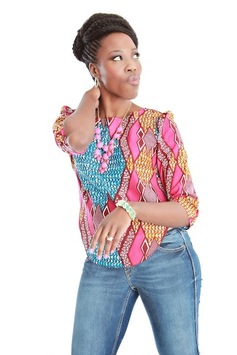 Check out Queen Christine's Hair Journey & Regimen Check out Queen Christine's Hair Journey & Regimen
Because sulfates were so widely used in shampoo (and they still are) using them as a cleanser is really brings down the cost of making a shampoo. Once consumers switched on to the fact that sulfates were too strong a cleanser for dry hair types and possibly had other negative effects some businesses decide to use alternative cleansers.
Using a cleanser other than a sulfate pushes the price up. Some alternative cleansers, e.g. cocamidopropyl betaine, have grown in usage so they are more widely available and therefore more affordable to use as a product ingredient. That said, milder cleansers are still being developed. Choosing to use a non-mainstream ingredient to improve product quality hikes the product price right up. How The Big Dogs Keep Prices Low There are three ways that big manufacturers keep prices down:
Product Price and Experience Some companies want to provide more than just a product to a customer. They want to provide a great experience, great customer service and a fabulous customer relationship. To provide this extra service their product will cost more. 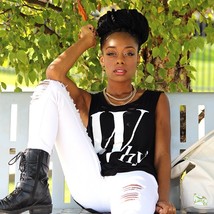 Check out Queen Gloria's Hair Journey & Regimen Check out Queen Gloria's Hair Journey & Regimen
Product Price and Status
Last but certainly not least, some customers want to buy products to show their status a little or to feel different to the masses. If you feel you work harder than most people then you want products most people cannot afford. You want a branded hair or body product that shows you care about quality. You don’t want “good enough” products, you want “best in category” products. Have you ever had a friend who goes from being on your level and all of a sudden they get a job paying them triple? They get a new place to live and when you go over to the house warming party everything in their place tells you upfront, I’m on another level now. Even the hand wash in the bathroom is a superior and exclusive brand. You look on in admiration and just think, I need to work hard and get myself nice stuff like this. Premium products differentiate themselves by going above and beyond on product packaging as well as other small branding elements that the premium consumer cares about. It’s why you choose to buy a Mercedes Benz over a Toyota when they both do exactly the same thing. In summary, a product may be more expensive because:
Currently, damaged hair cannot be repaired permanently.
Weak and damaged hair conditioners simply fill in he holes where your cuticle has been damaged and after a few washes those holes get uncovered again. This is why those conditioners need to be re-applied every few weeks. Scientists are currently working on developing ingredients that can repair hair permanently but for the moment that research is in it infancy and the best you can do, is avoid getting hair damage in the first place. Here are a few tips:
How about henna? Well, henna only coats hair, it doesn't change the bonds in hair but by coating hair and making it fuller there may be more friction between hair leading to more tangles. Personally, if I were to dye my hair I would go for henna or a dye that coat hair (i.e. increases the likelihood of tangles) than dyes that lift the hair cuticle (i.e. and hence increase the likelihood of damage). 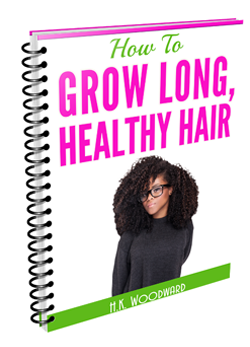
Get your FREE ebook on How To Grow Long, Healthy Natural Kinky or Curly Hair. 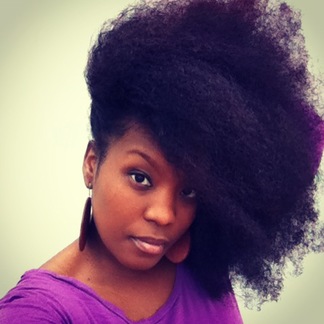 Click for Queen Donna's hair styles, journey & regimen Click for Queen Donna's hair styles, journey & regimen
Did you know that the cuticle, the outer layer of hair is covered in a fine layer of fats.
What is the function of these fats?
Effectively, they offer a degree of protection. However, when your hair gets exposed to sun the ultra violet light (UVA and UVB rays) degrades this fatty layer and you get sun damaged hair. This is why protective styling is just as important when it is very hot as it is when it is very cold. 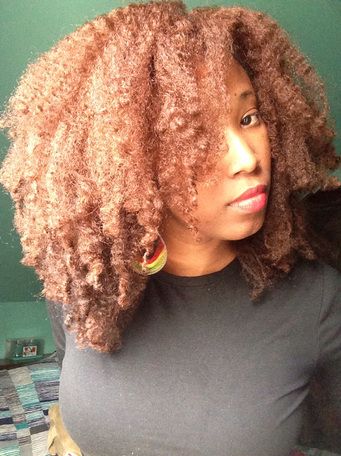 Click for Queen Samantha's hair styles, journey & regimen Click for Queen Samantha's hair styles, journey & regimen
At some point, we have all made these mistakes. Managing natural hair is very different to managing relaxed and it does take a little time to get the hang of it so don't worry if you're still learning.
1. Not Moisturizing Daily Our hair is naturally very dry. If you moisturize it in the morning, it will be dry by evening especially if it’s a very warm day and you were wearing your hair loose. To keep your hair soft you need to moisturize it daily with water, a good moisturizer and if it needs it, an oil or butter to seal. 2. Thinking Protective Hairstyles Are Only For Winter Protective styles protect your hair especially the ends from breaking and splitting. Our hair is most vulnerable when it’s flying loose rather than when it is pinned up, bunched up in a twist or in a braid. In winter, the air can be very dry and the wind intense so protective styling helps to prevent exposure to these extreme elements. In the summer, if it’s hot but not humid your hair can also get very dry so protective styling is actually ideal for both extremes. In fact, I find my hair gets more dry and even wiry on very hot days rather than in winter. You should use protective styling whenever the weather is too hot, too cold or windy because it helps with all extreme weather changes that make hair more vulnerable. 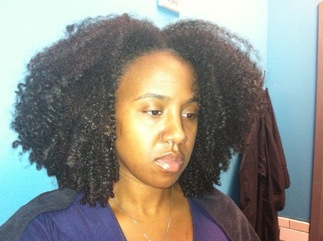 Click for Queen Kiki's hair styles, journey & regimen Click for Queen Kiki's hair styles, journey & regimen
3. Following Someone Else’s Regimen Without Adapting It For Your Own Hair
It’s completely normal to do this. Especially for someone who had relaxed hair for as long as I did, you don’t know what to do with natural hair. You end up following your favourite YouTuber or your best friend because you don’t know what else you should be doing. What you should be doing is trying everything out and if it doesn’t work on your hair: changing it, adapting it or ditching it until you discover what works for you. 4. Not Trimming So many people in the natural hair community are so obsessed with length that they don’t trim at all. The result is that they have thick roots but if they pull a bunch of hair out they only have 5 strands at the longest length. In some cases it can look a little extreme (and even silly). Trimming hair helps with health and growth. Neaten the ends up when they get messy or trim a little to neaten every 4 to 6 weeks as standard. 5. Braiding & Weaving Too Often  Click for Queen Courtney's hair styles, journey & regimen Click for Queen Courtney's hair styles, journey & regimen
I absolutely have nothing against braids and weaves. However, your hair does need a rest.
If you move from one set of braids or one weave to the next without a two week gap, at least, in between, you don’t get to observe your hair’s condition. Your hair edges could be getting thinner and thinner and the extensive plaiting may also be thinning your hair out. This was the reason I went natural to begin with. Combining braids and relaxer thinned my hair out very badly. By having a gap between braids I discovered the issue and took what was at the time the drastic measure of going natural. 6. Prioritizing Length Over Health & Enjoying The Journey Being natural shouldn’t be about your next length goal because that sucks the fun out of it. Whatever length of hair you have, enjoy it. I have never had a length goal, only a desire to keep my hair healthy. Of course everyone wants to observe growth but if that is your sole focus then you won’t enjoy the days when you’re in a TWA or transitioning. Just enjoy it! 7. Not Developing An Anti-Tangle Regimen As Hair Grows As your natural hair grows it will get more tangles and your regimen has to change to accommodate that. Your wash routine and your night time routine especially have to account for the fact that loose strands will tend to tangle and it will drive you mad.
Can you think of more treacherous mistakes that we make? Then make a comment.
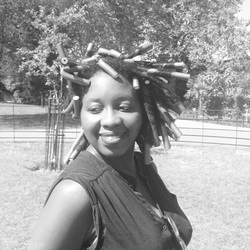
I wash my hair every 7 days on average but occasionally leave it until 10 days have past. This is what I do:
WEEKLY ROUTINE 1. Finger Detangle damp hair ...because it is far easier to detangle hair when it is just a little damp rather than when it is wet or very dry. Dampening the hair and softening it with a little conditioner is called plasticizing the hair. Product used: either a leave-in conditioner or a detangler, Luv Naturals is particularly good but only available in the US and also only on their website. 2. Shampoo
3. Deep condition
4. Detangle again but this time with a comb I take the shower cap off, detangle again and then section my hair into twists after the detangling. 5. Rinse out conditioner. 6. Moisturise and plait or twist each section. My hair has to be twisted or plaited to stretch it. When it was shorter I only did 3-strand plaits because they are the most effective at stretching but now that I have gone past the shoulder twisting seems to work fine.
DAILY ROUTINE
That is basically it. You might also like: Moisturising Natural Black Hair: LOC Method vs. LCO Method 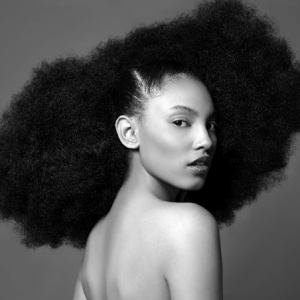 We all want thick hair! But very few have it... We all want thick hair! But very few have it... First things first, keep in mind that hair thickness is genetically predetermined; this means that you cannot make hair that has always been thin any thicker. Period. If your hair was thick and has started getting thinner, a problem that I myself have had, then here are 8 tips on how to improve your natural hair's thickness? The good news is that there are styles that make naturally thin hair look more volumised. My hair is thin at the very back and medium thickness for most of the rest. At the very top it's above average thickness. Here are some cool things you can do with thin hair. 1. Pin the front up and let the hair fall at the back only rather than having it all loose. Generally pin up styles, partial or complete, help to make hair look fuller 2. Use extensions e.g. marley hair to add volume. The below tutorial shows how quick and easy it can be once you get used to adding braid extensions to your hair. I think the head below is average thickness so don't despair if you're thinking "that's not thin hair". 3. Wear puffs and shrunken afros. Any hairstyles that bring hair together add to the illusion of volume. Puffs are awesome on stretched hair and even hair with shrinkage. Let shrinkage happen. Shrunken hair may look shorter but it also looks very thick. 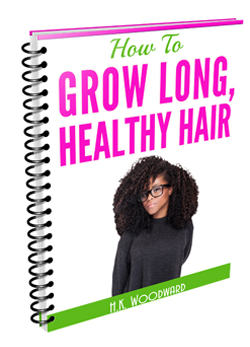 1. MASSAGE YOUR SCALP This will get blood flowing to your scalp bringing nutrients and oxygen to promote hair growth. The scalp is very thin so massaging it does make a difference to the blood flow. To avoid irritation use a good quality oil such as Neno Natural's Hair Growth Stimulator which has been enriched and fortified with the best essential oils for hair. 2. PREVENT MATTING Un-matting hair is obviously prime time for hair breakage. More so if your hair is dry. Two strategies for dealing with matted hair:
Watch this video on dealing with matted natural black hair. 3. GIVE YOUR HAIR A REST! Hair breakage generally occurs during the times that it's handled and styled using combs, brushes and blow dryers. If you braid your hair, get a sewn-in weave or corn row your hair for wig wearing, you give your hair a break and allow it it get on with the business of growing uninterrupted. This leads to better length retention. Read my 3 Biggest Challenges of Going Natural. 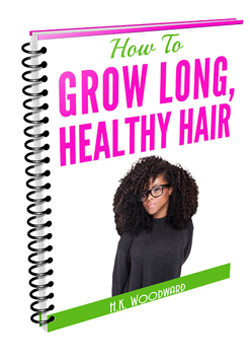 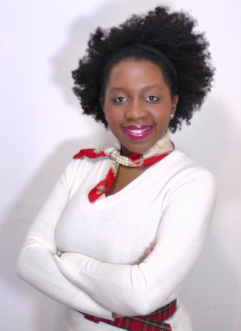 1. DRY HAIR Black hair has a natural tendency towards dryness, however, you feel it a lot more when you go natural. There is one universal moisturiser for softening hair that works for everyone: WATER! The problem is that water on its own evaporates very quickly. To retain the moisture from water you need to use an additional moisturiser, e.g. a leave-in conditioner then you need to lock that in with a cream and an oil via the LOC method or the LCO method. Finding the perfect leave-in conditioner for your hair type, the best cream and most suitable oil to lock in the moisture takes time. In addition, to maintain soft hair I have to wash and deep condition my hair every 7 to 10 days otherwise it gets very crunchy, a little like dry leaves. 2. TAKING EVERYONE'S ADVICE AS THE GOSPLE TRUTH Fact: everyone's hair responds differently to different products and regimens. Even if your hair type appears to be very similar to someone else's it doesn't follow that their regimen will produce the same results for you. Whenever you receive new information you need to see if it works for you before adopting it. If it doesn't work, don't follow that advice. I too made the mistake of following another person's routine too strictly even though their hair was definitely different to mine. Note also that you will need to change your hair routine at different lengths of hair. 3. FINDING A GOOD DEEP CONDITIONER Deep conditioners are a special category of conditioner. You need to use one every single week to ensure your hair is as strong and nourished as it should be. If your conditioner says "for daily use, or if it's very watery, it is not a deep conditioner. What challenges have you faced on your journey? 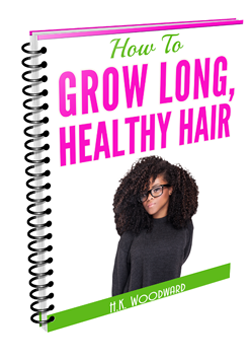 Get your FREE ebook on How To Grow Long, Healthy Natural Kinky or Curly Hair. References: 5 types of conditioner for natural hair and a frizz-free tip! Moisturising Natural Black Hair: LOC Method vs. LCO Method |
I now blog about wealth creation - so if you have any money questions meet me there, you can do all sorts of cool things like leave me a voicemail.
By Heather Katsonga-Woodward
I was a natural hair blogger and mixtress living between London & Chicago from 2012 to 2017. I always thought I was 4C but some say 4B; images below - you decide! Heather xx Categories
All
Archives
November 2016
|

